
The AIgorythm project

Playwright and actor
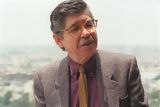
Novelist

Writer and poet

Volleyball player

Italian-Peruvian naturalist and geographer

Singer and percussionist

Last Inca emperor

Politician, former prime Minister

Journalist and TV host

Poet

Inca warrior

Actor and comedian

Biophysicist

Poet

Doctor and researcher

Businessman, Interbank group

Journalist and writer

Poet and writer

Singer and songwriter
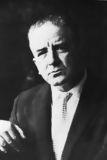
Writer

Film director, Berlin Golden Bear winner

Football player

Writer and journalist

Doctor and scientist

Photograph

Chess player

Industrialist

Former general

Specialist in public health

Actress and singer

Afro-Peruvian music singer

Mathematician and engineer

Indigenous chronicler

Neurologist and anthropologist

Painter

Football player

National hero, military leader

Intellectual and reformer

Chef and entrepreneur

Fashion designer

Singer-songwriter

TV presenter

Marathon runner

Indigenous Peruvian chronicler

Theologian

Former national team captain

Economist and former health minister

Inca princess

Writer and television host

Folk musician

Poet and guerrilla

Former UN secretary-general

Chef, known for fusion cuisine

Football player

Peruvian aviation pioneer

Poet and artist

Marxist philosopher and writer

Industrialist and businessman

Novelist and ethnologist

Painter and muralist

Opera tenor

Fashion designer

Cardinal of Lima

Peruvian tennis player

Football coach

Leader of the indigenous rebellion

Military hero

Latin singer

War of the Pacific hero

The youngest mother in history

Politician
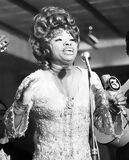
Creole music singer

Tennis player
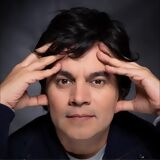
Musician

Writer and politician

Politician and founder of the Christian Democratic Party

Founder of Sodalitium Christianae Vitae

Archaeologist and anthropologist
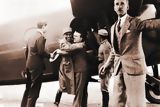
Military leader and politician

Television host

Actress and singer

Contemporary sculptor

Women’s rights activist

Beauty queen

Astrophysicist

Heroine of independence

Mathematician and archaeologist

Historian and anthropologist

Military figure and historical figure

Fashion photographer
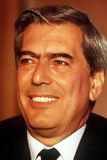
Writer, Nobel Prize in Literature, Politician

Revolutionary leader

Environmental activist

Leader of the indigenous rebellion

Musician from Gaia band

War hero
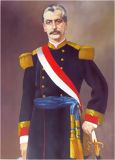
Military leader and politician

Chef, known for Nikkei cuisine

Volleyball coach and former player

Environmental activist

Television personality

Writer
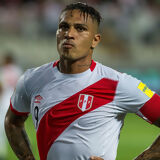
Football player

Epidemiologist and former health Minister

Inventor and aerospace pioneer

Soldier and inventor

Rock singer

Chef and co-owner of Central restaurant

Painter

Football player

TV presenter and actress

Actor

Writer and historian

Journalist and lawyer

Archaeologist, founder of Caral site

Monk and Saint

Saint, patron of Latin America

Physicist and engineer

World champion surfer

Actress

Oncologist

Singer, Latin Grammy winner

Former mayor of Lima

Singer

Actress

Former football player

Painter

Former football player

Painter

Inca leader

Archbishop, saint

Leader of the indigenous rebellion

Revolutionary indigenous leader

Diplomat and intellectual

Sculptor and painter
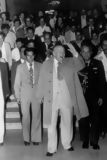
Political leader, founder of APRA

Lawyer and Former prime minister

Chef of Central restaurant

Former head of secret services

Popular singer

Fashion designer

Exotic music singer
Juan Santos Atahualpa, born around 1710 in the region of Chanchamayo, in the central jungle of Peru, was an indigenous leader who led one of the most significant uprisings against Spanish colonial rule in the 18th century. His figure has become emblematic of the struggle of indigenous peoples in the Amazonian region, and his rebellion marked a turning point in the history of indigenous resistance against colonial power. Although many details about his life remain shrouded in mystery, his legacy continues to live on in the indigenous communities of the Peruvian jungle.
Little is known about the early years of Juan Santos Atahualpa, but he is believed to have belonged to an Asháninka or Yanesha indigenous community. According to some historical accounts, he may have received education in Jesuit missions in Cuzco, where he learned to read and write in Spanish and possibly Latin, in addition to having knowledge of Catholic religion. However, this education also made him aware of the injustices and abuses that the Spanish inflicted on indigenous populations. The combination of his indigenous roots and formal education turned him into a leader with a deep understanding of indigenous traditions and the colonial power he opposed.
In 1742, Juan Santos Atahualpa emerged as the leader of a rebellion aimed at expelling the Spanish colonizers from the Chanchamayo region and the central jungle of Peru. He proclaimed himself a descendant of the Incas, adopting the name Atahualpa, the last Inca emperor, and claimed the legitimate right to rule the Peruvian territory in the name of his ancestors. His rebellion began in the mountains, where he quickly united different indigenous groups, such as the Asháninkas, Yaneshas, and Shipibos, in a common struggle against the Spanish.
Juan Santos Atahualpa's strategy was based on using the indigenous people's knowledge of the jungle's geography and guerrilla tactics to attack Spanish outposts and Catholic missions. His rebellion enjoyed considerable success during its early years, expelling Jesuit missionaries and gaining control over much of the Chanchamayo region. Unlike other indigenous revolts, Juan Santos Atahualpa was not easily defeated, making him a persistent threat to colonial authorities.
Juan Santos Atahualpa proved to be a charismatic and shrewd leader, capable of uniting various indigenous ethnicities under a common cause. In addition to his military skills, he used his position as a self-proclaimed descendant of the Incas to inspire loyalty among his followers. He also had a spiritual vision for his rebellion, promising his supporters the restoration of the Tahuantinsuyo, the great Inca Empire, and a return to a golden age of freedom and justice for indigenous peoples.
Throughout his rebellion, Juan Santos Atahualpa maintained a strict moral code among his troops, prohibiting abuses against women and allied communities. This discipline, along with his ability to mobilize indigenous peoples, allowed his rebellion to remain active for more than a decade, despite the Spanish efforts to crush it. The organized resistance led by Juan Santos Atahualpa posed a significant challenge to colonial power, which was unable to fully reclaim control over the Amazonian region.
As time passed, the rebellion of Juan Santos Atahualpa began to face difficulties. The Spanish colonial forces, although initially surprised by the insurgents' success, started organizing more effective counterattacks. However, the jungle's geography and lack of resources caused the conflict to become a stalemate. The Spanish managed to regain some peripheral areas, but they were never able to capture Juan Santos Atahualpa himself or completely extinguish the rebellion.
The lack of external support, combined with difficulties in maintaining a steady supply of weapons and food in the jungle, weakened the rebels. Although it is unclear when or how Juan Santos Atahualpa died, he is believed to have passed away after 1755, possibly in battle or from illness. However, his death did not immediately end the rebellion, as indigenous communities in the region continued to resist Spanish occupation for several more years.
Although his rebellion ultimately did not succeed in overthrowing Spanish colonial power, Juan Santos Atahualpa has become a legendary figure in the history of indigenous resistance in Peru. His leadership inspired later generations of fighters for independence and social justice. His name has been reclaimed by indigenous movements seeking justice and recognition of the rights of native communities in contemporary Peru.
Moreover, his rebellion highlighted the limitations of Spanish control over the Amazonian regions, a reality that would persist well into the 19th century. Despite its eventual decline, the figure of Juan Santos Atahualpa remains a symbol of the fight for self-determination and resistance to colonization.
Juan Santos Atahualpa was an indigenous leader whose legacy continues to resonate in the history of Peru. His rebellion, although not successful in its goal of expelling the Spanish colonizers, represented a significant challenge to colonial power and symbolized the resistance of indigenous peoples in the face of centuries of oppression. His figure is still remembered today as an example of the fight for freedom and dignity for indigenous peoples.